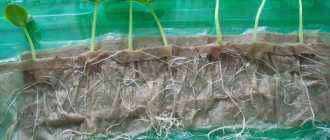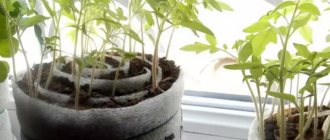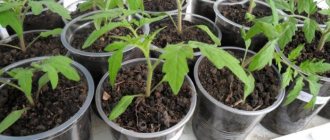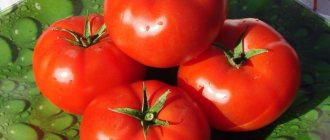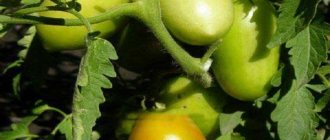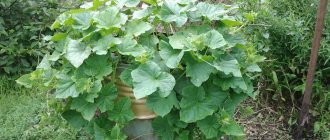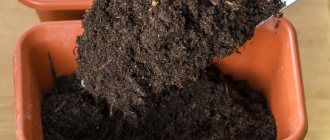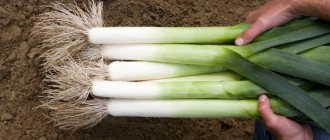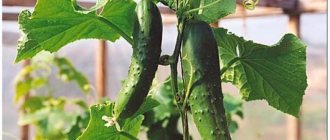Proper cultivation of seedlings in the spring is the key to obtaining a good harvest in the fall. But how can you manage to plant all the planned plants quickly, at minimal cost and with high quality? After all, there is not enough strength for everything. Previously, according to tradition, gardeners prepared the soil in the fall, then tinkered with it before planting - calcined it, washed it, and so on. In addition, working with soil means a large amount of debris and dirt. However, there is a way that will allow you to plant some seeds very quickly and at the same time keep your apartment clean. Seedlings on toilet paper feel great, and the summer resident saves a lot of free time and effort by growing them this way.
Seedlings on toilet paper
Growing seedlings on toilet paper
A little about toilet paper
The method of growing seedlings on toilet paper has recently appeared among summer residents, but is already very popular. The fact is that it has a lot of advantages that the gardening community did not fail to note. For example, using paper as a substrate significantly saves time and effort. Moreover, in order to implement this technology in life, in addition to the seeds themselves, a minimum of additional materials are needed - a roll of ordinary toilet paper, water, a plastic bag, scissors and containers.
How to easily grow seedlings
Paper was first used for hygienic purposes in China in the 600s AD. And after 700 years, specially created paper sheets were delivered to the emperor’s court every year: especially soft ones for the emperor himself and members of his family, and harder ones for the courtiers.
The first toilet paper appeared in China
In the mid-19th century, the first toilet paper appeared in the United States, which was cut into sheets and packaged in a box. In the same century, the production of this simple but ingenious invention began. And only at the beginning of the 20th century the first roll paper with perforation appeared, which was invented in Germany.
The production of toilet paper is far from the simplest process; during the creation process it must acquire certain qualities:
- softness;
- ability to tear easily;
- colorlessness (absence of chemical dyes) or coloring with certain harmless and hypoallergenic dyes;
- high hygroscopicity;
- the ability to easily disintegrate into individual fibers in water.
Toilet paper
Toilet paper contains waste paper (gray paper) and cellulose (white paper).
On a note! You can use more than just toilet paper as a substrate for growing seedlings. Disposable paper handkerchiefs and napkins are also suitable (but not ideal) for these purposes. The main thing is that the material is soft and easily torn.
Using toilet paper to grow seedlings
Toilet paper prices
toilet paper
Tomato varieties suitable for growing
All varieties of tomatoes are suitable for growing on toilet paper, but the following varieties grow best this way:
- Watercolor is a low-growing variety, the height of which is about 50 cm. The fruits are red in color and medium in size.
- Supermodel is a hybrid with early ripening tomatoes. The fruits are elongated with a pointed tip, weighing up to 130 g. The taste of the pulp is sweet.
- Skorospelka is a large-fruited hybrid, the maximum weight of tomatoes is up to 200 g. The pulp is red, juicy and fleshy. Early harvest ripening.
- Golden Stream is an early-ripening hybrid with medium-sized vegetables. The tomatoes are yellow in color and very sweet.
- Rapunzel is a cherry variety. The bush is covered with fruits. Tomatoes weighing about 30 g, scarlet in color.
See also
Description of the best varieties of tomatoes for the Krasnodar region of open ground and greenhouses
Read
In principle, tomato planting material grows well on toilet paper, regardless of the variety.
Why is paper good for gardening?
Toilet paper, due to some of its properties, is excellent for use as a substrate for growing seedlings. It is soft, does not allow the emerging roots to get tangled in themselves, and makes picking easy. At the same time, a reasonable question about nutrients can be answered as follows: due to natural characteristics, plant seeds during germination do not need additional nutrients and useful elements obtained from the soil. For the first time, what was laid down during their formation and development will be enough for them.
Toilet paper is great for growing seedlings
Let us remember the structure of seeds, which was studied in biology lessons at school. Seeds, whether dicotyledonous or monocotyledonous, contain special tissues that represent a supply of nutrients - proteins, starch, and oils. This may be endosperm, cotyledons and other tissues. Thus, we can say with confidence that at the beginning of their lives, small plants feed themselves, and therefore the presence of nutrients in the substrate is not at all necessary. On the contrary, some advise using a less nutritious substrate for these purposes.
Longitudinal section of seeds of dicotyledonous and monocotyledonous plants
Advantages and disadvantages of the “paper” method
The “paper” method of growing seedlings has a lot of advantages that gardeners did not fail to note. It is precisely because of these advantages that the method has become so popular and continues to actively spread among summer residents.
- Most plant seeds need poor soil to germinate, which will speed up the development of the root system, rather than the growth of the stem itself and the leaves on it. Toilet paper is precisely one of the substrates that is poor in nutrients.
- Seedlings grown on paper are, as a rule, stronger and stronger than those cultivated in greenhouse conditions on good soils.
- This method makes it easier to work with plants and allows you to select the strongest of them, which have the most developed root system.
- The germination rate of small seeds on toilet paper is higher than in the soil. For some plants, using toilet paper as a substrate is only beneficial. For example, peppers and petunias germinate faster and better on it. And it is often possible to “revive” expired seeds.
Petunia seedlings
- The survival rate of seedlings grown on paper is much higher than those grown on a regular substrate. They live well until the moment of picking.
- There is no need to fear that the seedlings will become ill with various plant diseases, for example, blackleg.
- The technology makes it easy to save space in your apartment for the first time.
- Caring for plantings on toilet paper is simple and convenient.
An original way to grow seedlings
The disadvantages of methods for germinating seeds for seedlings on toilet paper include the following.
- Some crops, such as strawberries, germinate very poorly on paper, as they require special conditions for development. For them, it is imperative to carry out pre-sowing preparation - for example, keep them in an ash solution.
- It is important to pay a lot of attention to seedlings after the roots appear. You must not miss the timing of planting sprouts in the ground (picking), otherwise the seedlings will die. To do this, crops should be checked every day.
- Plants may experience a lack of light if the planting is very dense.
Seedlings in toilet paper on the windowsill
How to plant in the ground?
Strong plants with a thick stem, which should have six to eight leaves, are planted in the soil. When planting in open ground, you must choose an area that is well heated by the sun and protected from the wind. It is recommended to plant in the afternoon.
Before the procedure, you should not water the seedlings - dried soil is easier to remove from the glass without damaging the roots.
- On the selected area you need to make rows at a distance of 70 centimeters from each other.
- Dig holes along the rows with a shovel at intervals of 40 centimeters. The depth depends on the height of the seedling.
- During planting, water the hole generously, then cover the seedling with dry soil or humus.
Growing tomato seedlings on toilet paper is easy and convenient. Not only an experienced gardener, but also a beginner can cope with the technology. The main thing is to prepare the seeds correctly, do not deviate from the instructions and carefully care for the seedlings. The “paper” method allows you to get healthy and strong plants without much expense.
What can you sow on paper?
The technology of growing seedlings on paper is theoretically suitable for all garden crops - eggplants, peppers, tomatoes, cabbage, onions. However, using it for heat-loving plants in order to save space is not always advisable. The fact is that seedlings of peppers, tomatoes, and cucumbers will still have to be planted into pots - after germination, these crops are not yet ready to move to the greenhouse, even in the southern regions of Russia. Both bulky pots and containers with seedlings will still stand on windowsills and tables at home. This method is relevant only in certain cases - for example, if you need to germinate seeds that have expired.
An original way to grow seedlings. There is no dirt, no worries about watering (at least at first)
But cold-resistant crops (for example, onions), which after germination are immediately planted in the ground, can and should be grown on paper.
How to care for seedlings
Until the first shoots appear, it is necessary to observe a special temperature regime. The temperature should not fall below 25˚. After the shoots appear, the temperature can be lowered. After the sprouts appear, it is important to provide them with sufficient lighting. If this is not possible, use special lamps.
Feeding is introduced after the seedlings have germinated. For this purpose, mineral fertilizers diluted in water are used. When watering seedlings, it is necessary to observe the measure, providing the amount of water that will be sufficient to keep the paper moist.
Preparing the seeds
Many seeds germinate perfectly on paper, but there are also those that will not germinate under any circumstances. These are dead grains that need to be disposed of. In order to sort “living” and “non-living” seeds, they need to be kept in a weak salt solution (at the rate of 30 g per 1 liter of water). All bad seeds will float to the surface - they can be collected and thrown away. Then the water is drained and the remaining seed is dried. After this procedure, it can be planted on paper.
Soaking seeds in saline solution
By the way, there are different ways to grow seedlings on paper. Let's look at the two most common of them.
Benefits of technology
The considered very simple seed soaking technology has a number of advantages:
The ability to determine the sowing suitability of seeds without much time and effort.
- Convenience and ease of germination.
- Speed.
- Possibility of visual observation of the process.
- Preventing seed drying. Thanks to the highly absorbent structure of toilet paper, both layers (bottom and top) remain moist, which protects the seeds from this negative phenomenon.
One of the disadvantages of this method is the control of the presence of water in the container.
Growing seedlings the Moscow way
You can germinate seeds using a method called “Moscow style” or the “roll-your-own” method. In order to implement this method, you will need water (spring or melt water is best, although you can use regular tap water, but it must settle), a syringe or spray bottle, the crop seeds themselves, plastic lunch bags, toilet paper and a plastic glass. In this case, toilet paper should be taken in white or gray - it is not advisable to use colored paper.
Step 1. Take one plastic bag and spread it flat on the table surface.
First you need to spread the bag
Step 2. Start laying toilet paper in layers on the surface of the bag. In this case, first lay the paper along the top edge, then along the bottom. And so on several times. The entire surface of the bag should be hidden.
Toilet paper is placed on top of the bag
Step 3. Be sure to moisten each layer with water from a spray bottle or syringe.
Each layer of paper is moistened
Step 4. Carefully place the seeds in one row along the top edge. Step back about 1 cm from the edge. Keep the distance between the seeds 1-2 cm.
Seeds are laid out on paper
Step 5. Now carefully roll the “roll-up” into a roll. You can start rolling from any edge. Try to ensure that the roll rolls evenly and neatly.
Rolling
Step 6. On the rolled up roll, write the name of the crop with a marker, and also indicate the date of sowing and the number of seeds.
Roll signs
Step 7. Pour some water into an empty plastic cup (about 5-10 mm).
You need to pour some water into the glass
Step 8. Place the roll with seeds in a glass of water with the bottom edge down (the one where there are no seeds).
The roll is placed in a cup
On a note! To save space, you can put several rolls of seeds in one glass.
Step 9. Take another plastic bag and cover the cup with the roll. This will keep you warm.
The glass is covered with a plastic bag
Place the glass with rolls in a warm place. The first shoots will appear in a few days. The bag should be removed when the first “loops” of seedlings appear above the paper. At the same time, the glass is moved to a well-lit place. You don’t have to add water at first, but as soon as the plant roots reach the liquid at the bottom, you need to start adding it (water) regularly.
Video - Tomatoes using the Moscow method
Growing seedlings on paper in a bottle
Seedlings on paper can also be grown in a bottle. Using this version of plastic container, you will immediately get both a mini-bed and a mini-greenhouse. You will need seeds, water, toilet paper, a plastic bottle and scissors.
Seedlings on toilet paper in a bottle
Step 1. Unroll several strips of toilet paper, fold them together and cut them into small pieces with scissors.
Toilet paper cut into small pieces
On a note! If the toilet paper is soft and very absorbent, then you can skip this step and simply cut or tear strips.
Step 2. Cut a plastic bottle into two parts so that the bottom remains intact, and place pieces of paper on one of the halves.
The bottle is cut into two parts
Step 3. Water the paper until it is thoroughly wet.
Paper is filled with water
Step 4: Place the seeds on the surface of the moistened toilet paper, cover them with other pieces of paper and write the name of the crop on the surface of the bottle.
Bottle signs
Step 5. Using the cap, close the bottle with the sown seeds.
The bottle cap is screwed on
Step 6. Place the bottle in a bag, tie it with an elastic band and place it on the floor under the radiator.
Video - Seedlings in a bottle
Growing seedlings in polyethylene foam cups
Another way to save on seedling containers is to make them yourself from foamed polyethylene, which is usually used as a backing for laminate flooring and is sold in hardware stores. The cylindrical container is rolled up in the same way as from paper, fastened with a stapler, and the bottom is lined with dense agrofibre. All these structures are placed in 2 tight bags (to avoid leaks) and filled with soil.
On the outer wall of the container, you can write with a marker the name of the crop, variety, planting date and other information.
You can make containers of any size, even one that allows you to avoid picking and grow seedlings before planting them on the ridge.
Do you practice something unusual with seedlings or do you prefer to use proven methods?
Seedling care
When the seeds are sown, all that remains is to properly care for them and wait for the first shoots.
Table. Conditions for seedlings when grown on toilet paper.
| Conditions, procedures | Short description |
| Lighting | Seedlings on paper are placed in a well-lit place after the seeds have emitted the first “loops”. In winter, seedlings should be illuminated with lamps. |
| Temperature | The temperature for seed germination should be about +25-27 degrees. After the appearance of inputs, it can be reduced to room temperature. |
| Humidity | Add water to the glass or bottle where the seedlings are located on the paper as they dry. |
| Top dressing | Seedlings can be fed with mineral fertilizer after germination. It is diluted in water for irrigation 1:1. The second feeding is carried out when the first leaf appears. |
| Picking into the ground | The procedure must be performed when the seedlings have grown a little and become stronger. This is usually done after the second feeding. The roll with sprouts is unrolled and the seedlings are carefully separated from the paper, and then planted in the prepared container. The seedlings are carefully removed from the bottle and also placed in the ground. |
Caring for seedlings in toilet paper
Coconut briquettes for seedlings
Coconut briquette is a substrate densely compressed under strong pressure, which consists of finely chopped fibers of the coconut peel. This is a completely natural nutritious material that is used for growing various crops, seedlings and indoor flowers, and other garden plants.
Picking
Important. After the appearance of two true leaves, tomato seedlings must be planted in small containers with soil. Cups or small pots are suitable.
Procedure:
- Fill containers with universal potting soil mixture for seedlings.
- Unfold the roll, carefully separate each sprout, pinch the roots and replant into a prepared container.
- Weak specimens should be immediately rejected.
Below you can watch a video on how to pick seedlings grown in toilet paper:
Tips for gardeners
Those who have already mastered the method of growing seedlings on paper know some of the pitfalls in these two methods, and therefore give their advice to inexperienced gardeners.
- It is recommended to use white paper for sowing seeds - it is best to see the changes occurring in the seeds and sprouts, and it is easier to notice the roots.
- It is not advisable to use handkerchiefs, since they absorb water much worse than toilet paper, and it is more difficult to remove the roots of seedlings from them.
- It is important to plant seedlings in small containers.
- When planting, do not deepen the plants too much.
You can also use transparent plastic containers for this method of growing seedlings.
Methods of growing seedlings on toilet paper are among the most convenient. They will not only keep the house clean, but also produce strong plants. However, you should not be too zealous and germinate all crops in this way - some are easier to sow immediately in pots.
